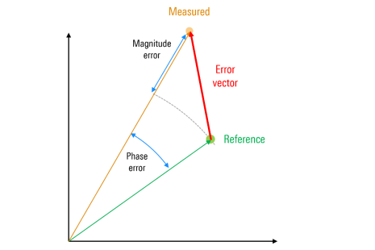Understanding EVM

The evolution of wireless communications technologies has been largely driven by the need for greater data throughput. Increases in achievable data throughput are based primarily on either increased bandwidth and/or higher modulation orders. Higher order modulation requires higher modulation accuracy, therefore quantifying modulation accuracy has become one of the most important tasks in the design, test, and debugging of modern radio frequency communications technologies.
This paper provides an introduction to error vector magnitude (EVM), which is the primary metric of modulation accuracy. It discusses the fundamentals of the digital modulation schemes used in modern radio frequency communications systems, in particular, APSK and QAM, the fundamentals of error vector magnitude, and basics of constellation diagrams and how constellation diagrams can often be used to diagnose or troubleshoot the common root causes of EVM.
Get unlimited access to:
Enter your credentials below to log in. Not yet a member of RF Globalnet? Subscribe today.
